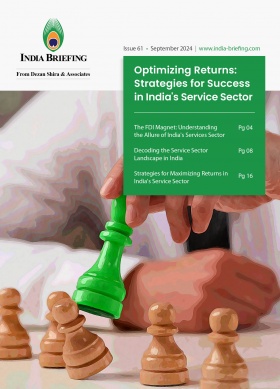India’s Project Visa: A Specialized Gateway for Foreign Skilled Professionals
India’s Project Visa policy eases entry for skilled foreign professionals working on government-approved projects. This article looks at sector-specific limits, eligibility norms, and procedural guidelines for employment and extension.
In a bid to facilitate the entry of skilled foreign workers for infrastructure-driven sectors, India’s Ministry of Home Affairs has streamlined its Project Visa (P Visa) framework. Aimed at foreign professionals engaged in the execution of specific projects, especially in the power and steel sectors, the Project Visa attempts to accommodate the rising need for technical manpower in projects critical to India’s infrastructure growth.
This special category visa, although a subset of the broader employment visa regime, carries its own regulatory framework, eligibility norms, and operational boundaries.
Visa specifically tailored for project-based work
Project Visa is designed for specialized, contract-based assignments rather than general employment. It is tightly bound to a single project contract and issued only for skilled or highly skilled professionals. Unlike a standard employment visa, which allows broader job mobility within India, the Project Visa restricts the foreign national to one project at a specific site.
According to the Ministry of Home Affairs (MHA) guidelines, this visa is not transferable and is granted only to skilled or highly skilled personnel. Applicants who are unskilled or semi-skilled are ineligible. Even within a project, foreign professionals cannot be reassigned to other locations or contracts, irrespective of whether the employer remains the same.
Each Project Visa holder may be accompanied by up to two chefs and two interpreters, also granted similar project-specific visas.
Read more: Indian Labor Laws
Timelines and renewal protocols of the Project Visa
The initial validity of the Project Visa is limited to either the duration of the contract or one year, whichever is shorter. For projects lasting more than one year, the respective state government or Union Territory authority can approve a one-year extension. Any additional extensions must be sanctioned directly by the Ministry of Home Affairs.
Visa holders must register with the relevant Foreigners Regional Registration Office (FRRO) within 14 days of arrival if their stay exceeds 180 days. Those staying for 180 days or less are exempt from this requirement.
In all cases, the Indian company hosting the professional bears full responsibility for the individual’s conduct and departure upon the visa’s expiry. This legal provision aligns with India’s ongoing efforts to improve compliance in cross-border labor arrangements.
Strict conditions on post-project employment
The visa also prohibits visa holders from accepting employment in the same Indian company for a period of two years after the project is commissioned. This cooling-off period ensures that the visa remains tied to project-based assignments rather than becoming a loophole to full-time employment in India.
Should a project fall within restricted or protected areas, applicants must also seek prior clearance through the Ministry of Home Affairs. In such cases, the grant of the Protected Area Permit (PAP) or Restricted Area Permit (RAP) must be coordinated with the visa process.
Sector-specific ceilings and personnel caps
In order to balance foreign expertise with domestic workforce development, India’s Project Visa scheme imposes sectoral limits on the number of foreign professionals that can be deployed onsite.
Power sector
In the power sector, two-unit projects that rely on foreign Original Equipment Manufacturers (OEMs) for critical components such as boilers, turbines, and generators are permitted to bring in between 50 and 70 foreign professionals.
For larger engineering, procurement, and construction (EPC) projects that deploy supercritical technology, the ceiling increases to a range of 76 to 125 foreign personnel.
Where Flue Gas Desulphurization (FGD) systems are imported, additional allowances are provided, 37 professionals for the first extra unit, 44 for the second, 50 for the third, and 56 for the fourth, allowing greater flexibility for more complex setups.
Read more: India’s Growing Power Sector in 2025: Investor Outlook
Steel sector
In the steel sector, greenfield projects can recruit up to 10 percent of their total skilled workforce or a maximum of 300 foreign professionals per million tons of installed capacity.
Brownfield projects are subject to tighter limits, with a cap of five percent or a maximum of 150 foreign professionals per million tons.
Any deployment that exceeds these prescribed thresholds must undergo a detailed review by a standing committee comprising officials from relevant ministries.
Document checklist and application process
The application process is corporate-led and requires involvement from both the employer and the visa applicant. Here’s how it unfolds:
Employer initiation
The Indian company submits a detailed project report including scope, duration, and manpower requirements.
Document preparation
The applicant must submit:
- A valid passport with at least six months of remaining validity and a minimum of two blank pages;
- Passport-sized photographs meeting Indian specifications;
- A completed visa application form;
- A letter of engagement from the Indian company, along with a project contract detailing the scope of work and the applicant’s role;
- Evidence of the applicant’s educational and professional qualifications;
- A letter confirming the foreign origin and transfer of part or all of the project; and
- A valid travel insurance policy.
Consulate submission
The application, duly filled and signed, is submitted to the Indian consulate/embassy in the applicant’s home country.
Biometric and interview
The applicant must attend an interview and provide biometric data.
Fee Payment and review
Post submission, the visa is reviewed and processed. Approval typically takes several weeks to a few months, depending on the accuracy of documentation and sensitivity of the project.
Advantages for business and bilateral collaboration
India’s Project Visa structure attempts to address the skill gap in large infrastructure projects and build trust among global investors and EPC firms looking to deploy talent efficiently and lawfully. By restricting eligibility to skilled professionals and tying access strictly to the location and project, India aims to reduce regulatory loopholes and prioritize the transfer of technical know-how.
For Indian companies, especially those executing time-sensitive contracts, the visa provides a legal route to secure specialized expertise that may not be readily available in the domestic labor market. This becomes especially relevant for joint ventures and multinational partnerships in advanced power plants, renewable energy infrastructure, and modernized steel production facilities.
In brief
Companies and professionals aiming to use this route must be meticulous in compliance and clear about its limitations. Yet, within those boundaries, the Project Visa attempts to offer a practical and dependable solution for cross-border project staffing, ensuring that India remains open to expertise while safeguarding the interests of domestic workforce.
Read more: Business Visas in India
About Us
India Briefing is one of five regional publications under the Asia Briefing brand. It is supported by Dezan Shira & Associates, a pan-Asia, multi-disciplinary professional services firm that assists foreign investors throughout Asia, including through offices in Delhi, Mumbai, and Bengaluru in India. Dezan Shira & Associates also maintains offices or has alliance partners assisting foreign investors in China, Hong Kong SAR, Vietnam, Indonesia, Singapore, Malaysia, Mongolia, Dubai (UAE), Japan, South Korea, Nepal, The Philippines, Sri Lanka, Thailand, Italy, Germany, Bangladesh, Australia, United States, and United Kingdom and Ireland.
For a complimentary subscription to India Briefing’s content products, please click here. For support with establishing a business in India or for assistance in analyzing and entering markets, please contact the firm at india@dezshira.com or visit our website at www.dezshira.com.
- Previous Article Uttar Pradesh’s Bid to Become India’s Next GCC Hub
- Next Article 印度出台新能源汽车新政,吸引全球汽车巨头投资








